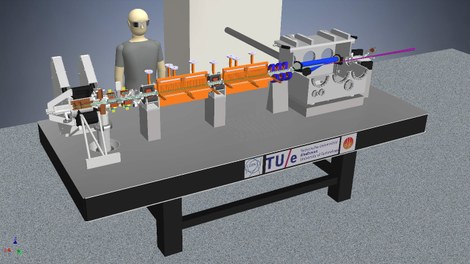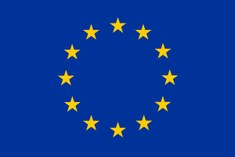Interreg Vlaanderen Nederland - Smart*Light
Interreg Vlaanderen-Nederland
Dutch version
Smart*Light
4 Academic institutes, 8 private organisations
Project coordinator: Hessel Castricum (TU Delft); H.L.Castricum@tudelft.nl
Duration: 1/1/2018 – 31/12/2022
Description of the project

X-ray technology is present in many industrial, academic, historical and medical applications, ranging from pipeline inspection to the investigation of old paintings. This is typically done using conventional X-ray sources, yielding only a limited intensity and limited tenability. For more advanced applications, such as the development of high-tech materials and new pharmaceuticals, radiation with a high intensity and coherence is necessary. This kind of radiation can currently only be produced at synchrotrons, large accelerator facilities which have a limited accessibility and are all located outside the Benelux region.
Using new accelerator technology, a compact and highly flexible setup will be designed to use these accelerated electrons to convert laser light to an intense and coherent X-ray beam (through the physical process called Inverse Compton Scattering). With this radiation, state-of-the-art analyses can be performed, valuable to different aspects of society. Though this novel X-ray source, dubbed Smart*Light, will not replace the current synchrotron facilities, the compact design and high degree of flexibility will make it highly complementary. As such, users will be more dependent on the limited measurement time at synchrotron facilities.
The whole setup will be as compact as possible, and therefore it can be used in any research facility, and allows to include complex measurement setups and long-term experiments. This will facilitate e.g. materials research, investigating the relationship between process conditions, microstructure and materials characteristics in metals, pharmaceuticals, building materials, 3D printed materials, etc. On the longer term, Smart*Light offers a unique potential for medical imaging in hospitals, and in-situ research on valuable artworks.
In the project, an intense collaboration between universities, companies, museums and research institutes is set up based on the different specialties. The source will be designed and built at TU Eindhoven, Ghent University develops the measurement system for X-ray imaging and the University of Antwerp develops systems for X-ray diffraction and fluorescence at artworks
This project is funded by Interreg Vlaanderen-Nederland, which subsidizes collaborative projects for smart, green and inclusive growth. The cross-border nature of an Interreg-project is essential: an intensive collaboration between partners from both regions takes place, in which the partners provide complementary financing. Interreg is funded through the European Regional Development Fund (EFRO).
Objectives
These are the objectives of Smart*Light
• Developing a table-top Inverse Compton Scattering X-ray source
• Demonstrate the potential of the X-ray source for high-resolution X-ray imaging in a wide range of application areas using a custom-designed end-station
• Demonstrate the potential of the X-ray source for the investigation of artworks using analytical techniques such as XRF and XRD.
• Investigate the possibility for commercialization of the system and respective end-stations.
Role of Ghent University
Ghent University is mainly involved in the application of this novel X-ray source for high-resolution X-ray tomography (micro-CT). The Radiation Physics research group, part of the Ghent University Centre for X-ray Tomography (UGCT) will design and build, in collaboration with the spin-off company XRE an end-station capable of performing micro-CT and exploiting the unique characteristics of the Smart*Light source.
In a close collaboration with micro-CT users, UGCT will investigate the specific advantages of this setup in a wide variety of applications such as geosciences, materials sciences and pharmacy. To achieve this goal, Ghent University has received additional funding of Provincie Oost-Vlaanderen.
Contact
Prof. dr. ir. Matthieu Boone
Department of Physics and Astronomy
Phone number: +32 (0)9 264 6628
E-mail: Matthieu.Boone@UGent.be


